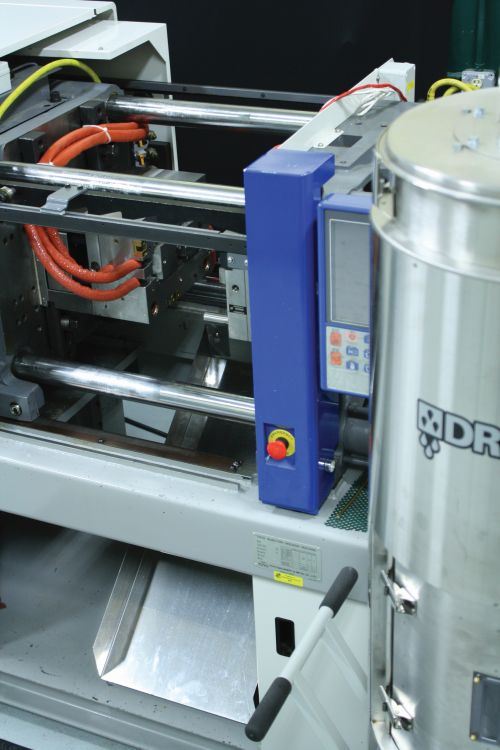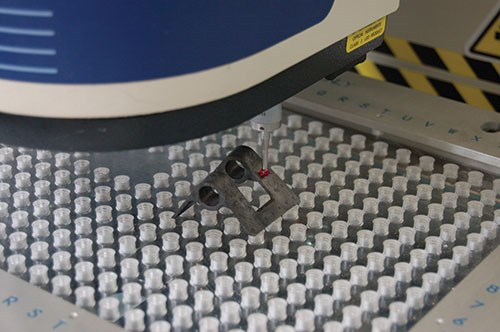Designing and Building Molds for Aerospace Requirements
The aerospace industry has some unique requirements for many of its plastic components, primarily because of the thermal expansion challenges these materials present.
The aerospace industry has some unique requirements for many of its plastic components, primarily because the polymers used for them are typically high-temperature, and glass-fiber and carbon-filled engineering thermoplastics. A supplier of molds and molded/machined components for
this industry must understand that the conventional mold design approach does not accommodate the thermal expansion challenges typically associated with these materials.
“The high temperatures required to mold many of the materials mean that normal fits, clearances and interlocking features typically found in conventional injection molds won’t work,” explains Mark Ypsilantis, vice president of marketing and sales of Westminster Tool, a Plainfield, Connecticut-based mold manufacturer with molding capabilities for mold tryouts and short production runs.
With more than a decade of history working with the aerospace industry, Westminster Tool understands the requirements for molding components in the types of materials needed to withstand the high heats in aircraft engines. Typical materials for which Westminster designs molds for aerospace customers include PEEK, PBT, LCP, PAI (Torlon), PEI (Ultem) and PPA, among others. Additionally, Westminster is a Solvay-certified processor of Torlon that understands its properties and the nuances involved in designing and building molds for this material, as well as in molding it.
“The approach to designing a mold for parts in a material like Torlon or Ultem has to be very different,” Ypsilantis says. “Keeping in mind the thermal expansion that a mold undergoes with the extremely high molding temperatures, shutoffs need to be very robust. For example, determining the thermal expansion of a mechanical action is critical to optimal mold functionality over the long term.”
Venting these tools is extremely critical, and setting them up so they can be easily cleaned is also important, because they tend to gas up and get extremely dirty, requiring more maintenance.
Gates for these molds are typically post-machined. “Not always, but definitely with some of the low-flow materials such as Torlon, we’ll machine an oversize fan gate into the part,” Ypsilantis says. “It really depends on the size of the part. If it’s a small part, you can sometimes get away with a gate that de-gates automatically.”
There are many instances in which a net shape part cannot be produced as it can with conventional thermoplastics. “There are dimensional challenges in combination with the material characteristics,” Ypsilantis explains. “In some cases, we build the mold to produce the features that are repeatable and machine the other features. We make a Torlon part for one customer in which we injection-mold a rectangular part and then machine the features.”
Westminster Tool has invested heavily in R&D to develop customized fixtures and tooling to machine the parts that require these added features that cannot be molded in. “We’ve taken our moldmaking competency and applied it to machining workholding fixtures, as well as developed tooling to more efficiently cut that material,” Ypsilantis says. “For example, we contend with large gates by developing customized fixturing and tooling in-house for efficient handling of these engineered, filled materials. They are very abrasive, and as we’re machining these parts, we’re creating shapes. That means we need an exact method of holding them to maintain the high quality the aerospace industry expects.”
For more information:
Westminster Tool and Westminster Solutions
860-564-6966
westminstertool.com
Related Content
Editorial Guidelines: Editorial Advisory Board
The Editorial Advisory Board of MoldMaking Technology is made up of authorities with expertise within their respective business, industry, technology and profession. Their role is to advise on timely issues, trends, advances in the field, offer editorial thought and direction, review and comment on specific articles and generally act as a sounding board and a conscience for the publication.
Read MoreWhat is Driving Mold Lifecycle Management Digitalization?
OEMs are looking to partner with suppliers to share and track data across the supply chain for advanced intervention and process management.
Read MoreThe Critical Role of Management Representatives in ISO 9001
In ISO 9001 quality management systems, the Management Representative (MR) plays a crucial role. While the 2015 version of ISO 9001 no longer mandates this position, having a trusted management member serve as an MR remains vital for streamlining operations and maintaining quality standards.
Read MoreMaking Mentoring Work | MMT Chat Part 2
Three of the TK Mold and Engineering team in Romeo, Michigan join me for Part 2 of this MMT Chat on mentorship by sharing how the AMBA’s Meet a Mentor Program works, lessons learned (and applied) and the way your shop can join this effort.
Read MoreRead Next
Reasons to Use Fiber Lasers for Mold Cleaning
Fiber lasers offer a simplicity, speed, control and portability, minimizing mold cleaning risks.
Read MoreAre You a Moldmaker Considering 3D Printing? Consider the 3D Printing Workshop at NPE2024
Presentations will cover 3D printing for mold tooling, material innovation, product development, bridge production and full-scale, high-volume additive manufacturing.
Read MoreHow to Use Strategic Planning Tools, Data to Manage the Human Side of Business
Q&A with Marion Wells, MMT EAB member and founder of Human Asset Management.
Read More






















